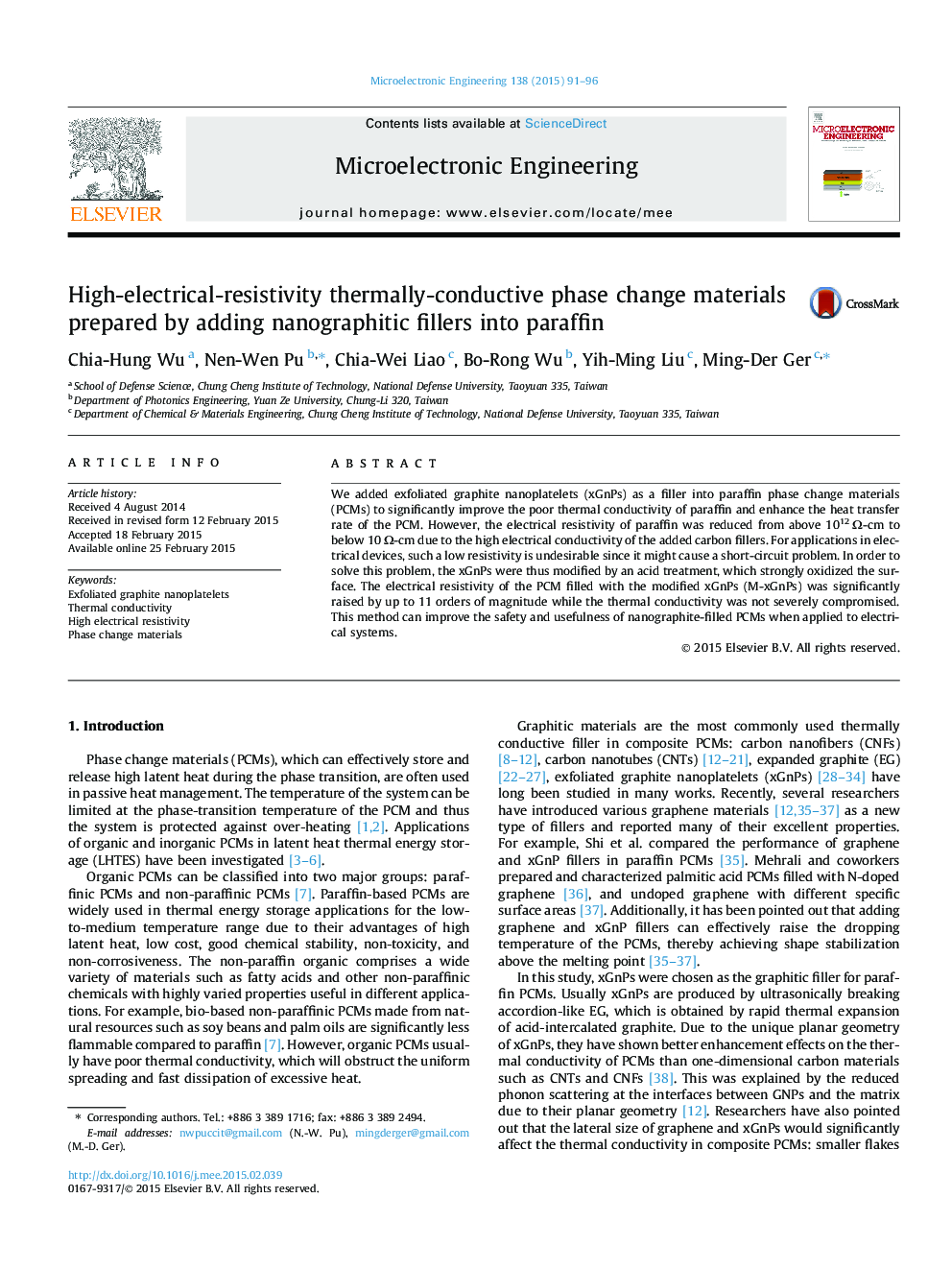| Article ID | Journal | Published Year | Pages | File Type |
|---|---|---|---|---|
| 538944 | Microelectronic Engineering | 2015 | 6 Pages |
•Exfoliated graphite nanoplatelets (xGnPs) enhanced paraffin’s thermal conductivity.•Insulating thermally-conductive phase-change materials (PCMs) were achieved.•High resistivity (1012 Ω-cm) of paraffin was restored by acid modification of xGnPs.•The thermal conductivity was not severely compromised by the acid treatment.•The composite’s thermal conductivity was 170% higher than that of paraffin.
We added exfoliated graphite nanoplatelets (xGnPs) as a filler into paraffin phase change materials (PCMs) to significantly improve the poor thermal conductivity of paraffin and enhance the heat transfer rate of the PCM. However, the electrical resistivity of paraffin was reduced from above 1012 Ω-cm to below 10 Ω-cm due to the high electrical conductivity of the added carbon fillers. For applications in electrical devices, such a low resistivity is undesirable since it might cause a short-circuit problem. In order to solve this problem, the xGnPs were thus modified by an acid treatment, which strongly oxidized the surface. The electrical resistivity of the PCM filled with the modified xGnPs (M-xGnPs) was significantly raised by up to 11 orders of magnitude while the thermal conductivity was not severely compromised. This method can improve the safety and usefulness of nanographite-filled PCMs when applied to electrical systems.
Graphical abstractFigure optionsDownload full-size imageDownload as PowerPoint slide
